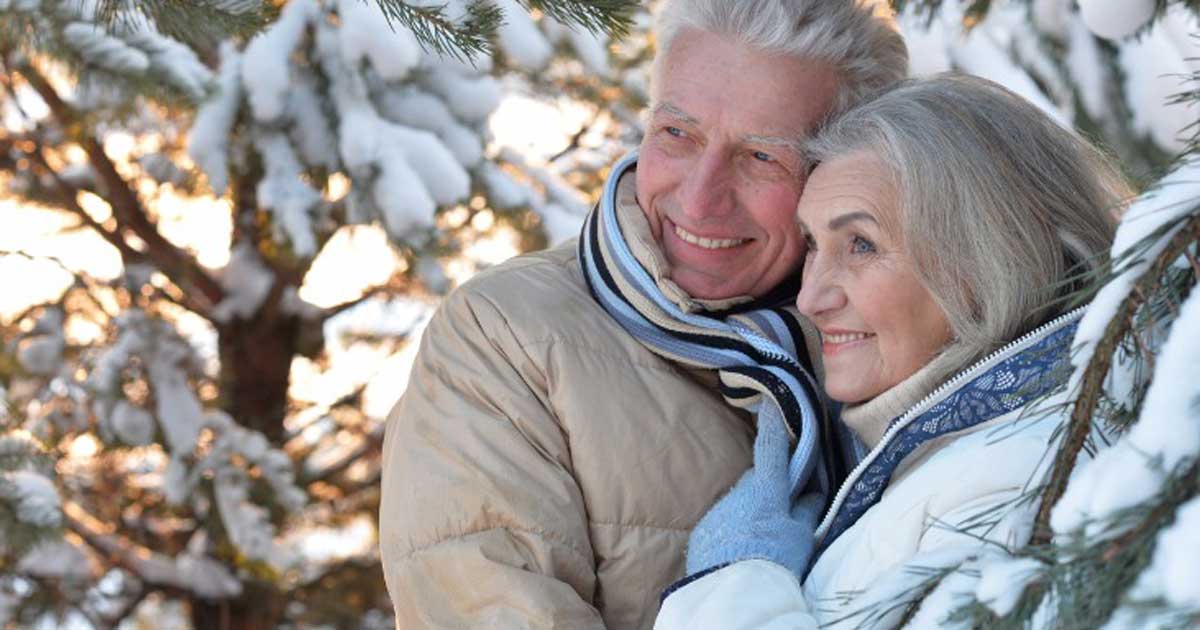The winter’s in full force here in Michigan, and while it might be uncomfortable and a little disheartening, there’s something much worse at the works: physical danger.
With the cold, frosty Mitten State winter also comes more dangerous conditions – particularly for older adults. The risk of hypothermia increases, in-home fires become more common and falls become easier on virtually every surface we walk on.
In fact, according to the Bureau of Labor Statistics, more than 40,000 injuries occur every year due to icy or snowy conditions – and that’s just in the workplace.
Falls in Older Adults
For the younger population, a fall might not be life-threatening. But as we age, they can more easily lead to pain, injury or even death.
According to the National Council on Aging, falls are actually the leading cause of fatal injury in older adults. About a third of all adults over the age of 65 falls at least once a year, and by the time they’re 80, it jumps to more than half.
Part it has to do with winter conditions, though much of the increase is age-related too. As our bodies age, we tend to lose sensation in our feet – either due to diabetes, poor circulation, arthritis or other health conditions – and this can make maintaining our balance difficult, or even impossible, in slippery conditions. Throw in potentially dizzying medications, and the recipe for disaster is set.
It’s for these reasons we must make efforts to protect our loved ones from potential falls – both in cold, Michigan winters, as well as year-round.

Preventing Winter Wipeouts
The threat winter poses to our aging loved ones it obvious, but what can you do about it? For one, you winterize their shoes, boots and assistive gear. This means attaching extra grips to their footwear, adding ice gripper tips to canes and walkers, and choosing shoes with thick, rubber soles that offer plenty of traction. You can also install snow tires on their wheelchairs for added safety.
Some other ways you can prevent falls:
- Monitor their sidewalks, driveways, walkways and outdoor surfaces – Make a plan to visit often, and assign other family members to do so if you can’t always be on hand. This is especially important after a fresh snowfall or freeze, as conditions will be particularly dangerous in the following days.
- Keep snow shoveled and ice removed – When you visit, shovel ice away from any walkways your loved one may use. Scrape away ice, and keep pathways clear for passage at all times. If you don’t have the tools to do so, consider hiring a service that can keep the home shoveled and free of ice and snow on outdoor surfaces.
- Apply kitty litter to slick surfaces – Add kitty litter to porches, patios, sidewalks and garage floors, where it could get slippery if cold or damp. Put together a Ziplock baggy of kitty litter, and encourage your loved one to keep it in their bag, purse or on shelving near doorways they may exit or enter. Talk to them about the importance of laying the litter down before passing through.
- Install rubber mats inside each doorway – Many falls occur when older adults enter their homes with shoes fresh off the snow or ice. They then step onto their wood flooring, tile or other hard surface, and a slip is unavoidable. Install rubber mats inside each door to give your loved one a sturdy, slip-free surface to step onto.
- Add handrails and grab bars – If their home doesn’t already have them, install handrails and grab bars through the property. These are especially important on stairs, just inside doorways and next to outside steps and entries. For good measure, be sure to add grab bars to toilets and tubs while you’re at it.
- Install automatic light systems – Slippery conditions become much more dangerous when lighting is bad, so install motion-activated lights both outside the home and in the garage. Give your loved one the highest level of visibility possible when entering a potential slippery situation.
- Add storage to entry areas – When dealing with slick surfaces, your loved one shouldn’t be managing big bags, keys, coats and other items in their hands, as this will make staying upright even more difficult. Consider installing storage units inside each doorway to give them somewhere to put things down as they enter and leave the home.
It’s also important to talk to your loved one about the dangers that winter poses. Walk them through the precautions they should take, and warn them about what icy, snowy or slippery conditions may look like. Give them numbers to call in case they need help, require a ride or have fallen and cannot get up. Let them know they have options other than entering a dangerous, slippery situation.

Other Safeguards
Sometimes, despite any prevention strategies you have in place, a fall may be unavoidable. In this case, you want to have a safe, easy and fast way for your loved one to get the help and care they need.
Consider gifting them an alert bracelet that allows them to instantly call 9-1-1 should they be injured or hurt. There are even motion-trigged versions of these alert systems that will call authorities immediately in the event of a fall.
You should also make sure your loved one has updated glasses or contacts, and that their vision or hearing is not impaired. These can both increase their risk of fall – especially in the dark, cold wintertime.
If you fear your loved one is unable to care for themselves or may pose a danger left on their own during the winter months, you may want to consider a professional elder care community, which will give them round-the-clock care and supervision. Come tour Ganton’s Countryside today to see if this could be a good option for your loved one.
For information about Countryside, call Margaret Nagel at (517) 206-5000 or download our brochure to learn about our care levels, cost, and amenities.


